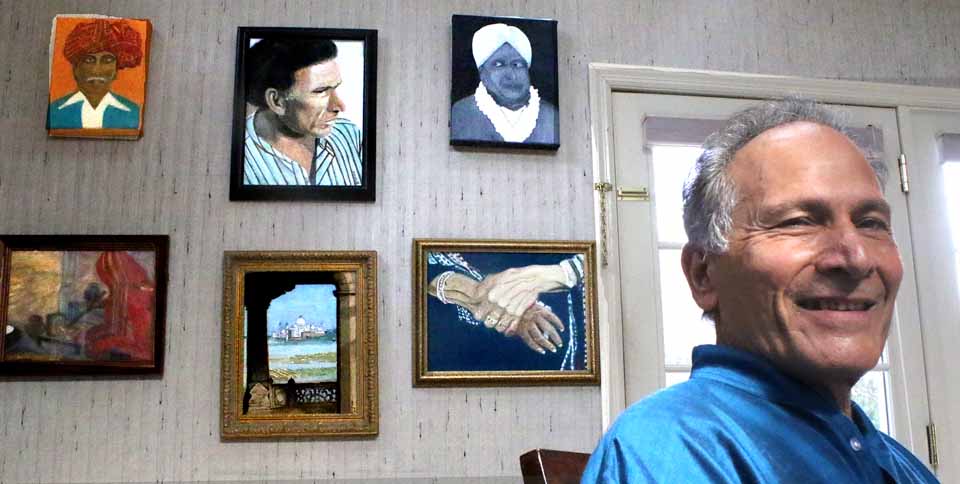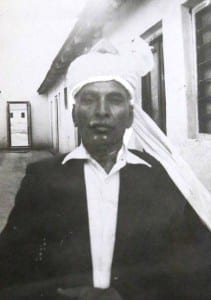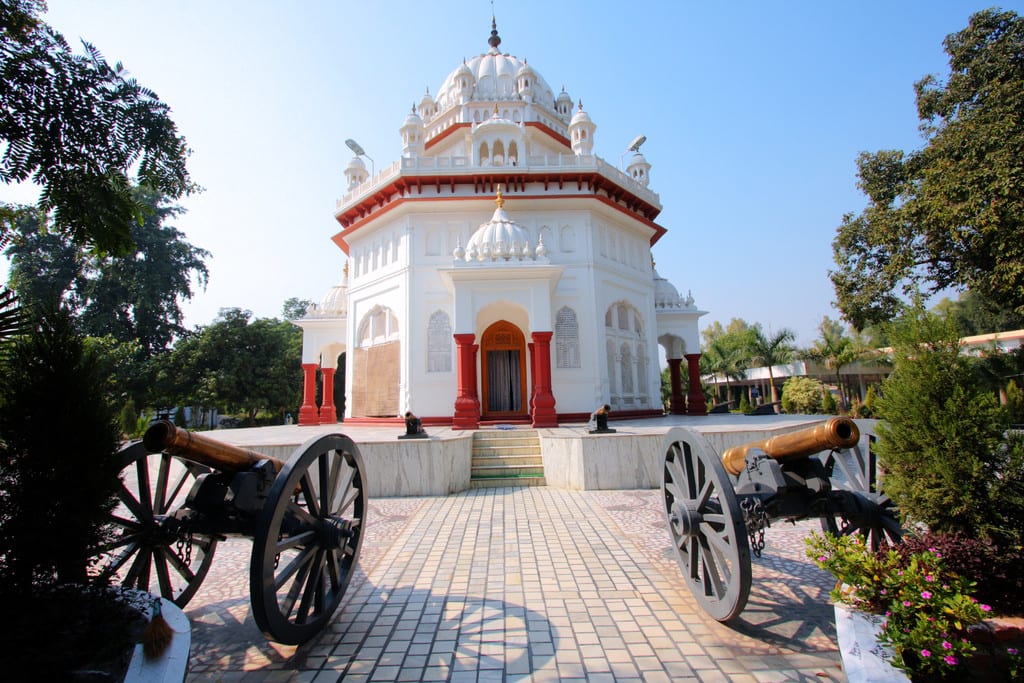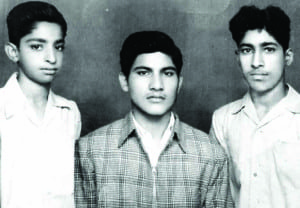THE NIGHTINGALE & THE FIREFLY/PART I
Boyhood, Interrupted

Editor’s Note: This is the first article in a three-part series on Ashok Malhotra, who retired in December after almost a half-century in SUNY Oneonta’s Philosophy Department. In was published in Hometown Oneonta & The Freeman’s Journal on Feb. 25-26, 2016.
By JIM KEVLIN • for www.AllOTSEGO.com

ONEONTA – When Ashok Malhotra was 5 or 6, his grandfather told him a story.
A nightingale had flown far from her nest, seeking food for her fledglings, and it was night, dark night. Lost, at the end of a branch, she wept.
Along came a firefly and, learning of the nightingale’s plight, guided her home by his tiny light.
“Even thought you are small, you can perform miracles,” his grandfather told him. “You can be the hope in the darkness.”
Malhotra, who has been nominated repeatedly for a Nobel Prize since 2010, retired from SUNY Oneonta in December after a 48-year career there and 75 years of a life full of tribulations and accomplishments, taking him from a modest home in the small town of Ferozepur, near the India-Pakistan border, half-way across the globe to a bright, meticulously maintained home on Center Street.
He seems to remember every detail of those early days in the house he shared with 10 brothers and sisters, his parents – father Nihal and mother Vidya – and grandparents Hari Chand Chopra and his wife Veera.
The family of 15 slept in two rooms. Every morning in those early years, his grandmother, between 4-5 a.m., would begin churning milk in a big bowl, reciting devotional songs – “I remember listening from my bed; I never wanted it to end” – until the liquid became butter.
By then, Ashok’s father, who owned 10 cows and sold milk – this put the family firmly in the Indian middle class – would be making the rounds for Ferozepur, selling his daily wares.
To the sound of his wife’s devotions, grandpa Hari would have been hand-pumping water into an urn. At 5, he would summon his grandchildren, oldest to youngest – Ashok was eighth in line – for a cold-water dousing with a ladle.
Meanwhile, Veera would start a fire in a modest hearth – a square, three sides of brick, heated with dried cow chips from the family’s herd – and boil water for 15 cups of sweetened tea.
She would then call her daughter, Vidya, to knead the flower for chapatis, enough for 45 of the flatbreads to sustain the family that day. The youngest would eat first.
•
At age 6, Ashok entered elementary school, typically four grades; most Indians would study no further. The other day, with his iPad close at hand, Malhotra told how each student wrote his or her lessons on a white board, with handle attached, after mixing ink from black powder and cutting a quill for a pen.
On one side of the board, pupils would write their Urdu lessons; on the other, math. (In the next six grades – high school – students who went on would begin learning Hindi, the national language, in fifth; English, the official language of the ruling British, in sixth, and Sanskrit, the language of literature and poetry, in seventh.)

His grandfather had been a railroad stationmaster for the British. He was transferred every two years; Ferozepur was his final posting, and he retired in 1941, the year Ashok was born. In his retirement, he worked as a civilian in the local Army post.
Of the adults, Hari Chopra was the only one who could read, having completed high school. He would read to the children from “The Arabian Nights,” the tales of Sinbad, Aesop’s fables, and literature from China and Japan. He never distinguished what he read by country or culture; Ashok simply accepted this wide range of world literature as part of a common culture.
“Grandpa’s home!” the children would shout when he arrived home at 5. And he would sit in the one cane chair and put his feet up. The grandchildren would assemble his multi-part brass hookah, place tobacco in the bowl, drop burning charcoal on it, and watch as he inhaled through the bubbling water.
As the smoke entered his lungs, “his eyes would pop open; we knew, now, the fun would begin,” his grandson remembered. Rising, the grandfather, Ashok in tow, would then go for a walk, telling a story as he went. The walk would be a mile, two miles, five miles, depending on the length of the story. “You are my vitamins,” he would tell his grandchildren. “You are the flowers in my garden.”
That was seven decades ago now, and Malhotra had forgotten many of the stories. A few years ago, however, an artist as well as a philosophy professor, Ashok began painting a portrait of his grandfather from a dark black and white photograph, adding the colors he remembered from those long-ago walks.
As he painted, the stories came back to him. By the time the portrait was complete, he remembered 250 of them. He has since written down 80, the first 40 in a book published in 2011, “Grandpa Chopra’s Stories for Life Nourishment,” and 40 more in an e-book. “My goal, in the next couple of years, will be to write them all,” Malhotra said.
Of all, “The Nightingale and The Firefly” has brought the most nourishment over the grandson’s many years.
•
And so life proceeded, day to day, a dependable cycle, devotional songs, chapati and tea, studies in Urdu, grandpa’s stories in the evening, as history – the waning days of the British Raj – developed around the unsuspecting family.
That life received its first cruel jolt on Aug. 15, 1947, the day of partition, when Moslems were ordered to leave India for Pakistan, and Hindis in Pakistan were ordered to depart for India. Since Ferozepur, in the state of Punjab, was only three miles on the Indian side of the border, communities like Ashok’s hometown experienced a huge, immediate disruption. “There was lots of killing in the streets, lots of looting going on,” some of which the 6-year-old witnessed from the windows of his family refuge.
If partition was the beginning of the end, the end came the next summer, when the Sutlej River, separating India and Pakistan, overran its banks. At 2 a.m. one August morning, the family was awakened: 14 feet of water is headed toward the city; evacuate, they were told.

The three generations, the 15 people, climbed aboard a big, bullock-drawn cart. The family hung on in the flat cab as they traveled all night and all day until 5 the next evening, covering 15 miles. Thousands of people had evacuated; there was no food, no water. Military aircraft flew over, dropping dried chapatis on the refugees below.
After 14 days, the water reportedly receding, two of Ashok’s older brothers and his father went on a scouting mission to Ferozepur and found water had receded to 3 feet. A hellish return trip on the bullock cart followed. “There were dead snakes, animals, rats, all floating by,” Malhotra said. “It took seven, eight, nine hours to make it through.”
“We finally came to our house,” he recalled. “It had always been so clean. Everything was smashed. The whole thing was in disarray.” Mud was everywhere. Most disastrous, the family’s 10-cow herd had drowned. The Chopra-Malhotra clan lost its means of support.
At the grandfather’s direction, the family began filling buckets of water to begin the cleanup.
Ashok’s father was increasingly morose, with 14 people to support and no way of doing so. “One day, he got up and just went away,” said Ashok. “I was 8 years old.”
“Grandpa kept going,” said the grandson. “He said, education is all there is.”


Ashokji is wonderful, full of life n always ready to help. He is lively n deserves to this coverage .god bless him give him happy healthy,looooong life.
I think he had good genes and had a wonderful life.